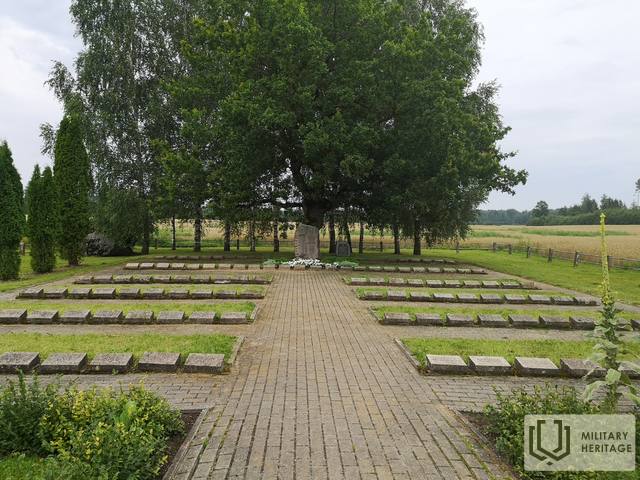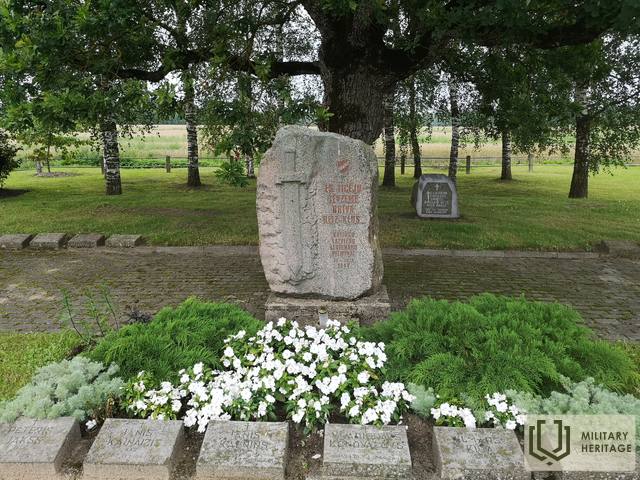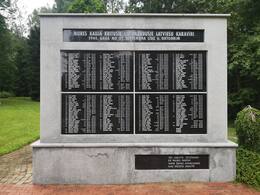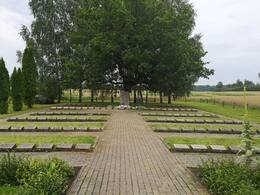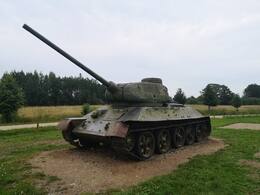Непризнанные солдаты. Рассказ о боевом офицере.
Битва при Море - это эпизод окончания Второй мировой войны, который имел большое значение в дальнейшем ходе войны на территории Латвии. Битва при Море знаменует собой войну на линии обороны Сигулды на территории волости Море, которая проходила с 25 сентября по 5 октября 1944 года. В окопах Сигулдской линии обороны, протяженностью около 12 км, солдаты 19-й дивизии Латвийского легиона, ведя тяжелые бои с 10-15-кратным поражением противника в течение 10 дней, остановили продвижение частей Красной / Советской армии навстречу. Рига.
«2001. В июле Мори посетил майор бундесвера с товарищем. Основной интерес вызвала тактика Второй мировой войны. Из истории войны известно, что 19-я латышская гренадерская дивизия Мора была атакована одной из самых известных русских дивизий, которой командовал генерал. Шатилов. Солдаты этой дивизии были очень хорошо обучены и использовали немецкую тактику нападения. Море потерпел поражение, и это заинтересовало немцев. Основными обсуждаемыми вопросами были тактика ведения боя. Впервые они услышали о некоторых аспектах как немецкие офицеры, а это значит, что они много потеряли со времен Второй мировой войны. Например, то, что во время битвы при Моресе командный пункт роты традиционно не находился на первой линии боя, как учили в немецкой школе, было для них в новинку. Противотанковые орудия зарекомендовали себя как средство защиты на передовой. Русские применили противотанковое оружие в атаке, задействовав его в первом эшелоне, но немецкие войска применили это тактическое решение в самом начале войны. Для них в этом не было ничего нового. Мори посетили также участники Второй мировой войны - танковый корпус генерала Штайнера, танковая дивизия «Викинг», танковая гренадерская дивизия «Гоц фон Берлихинген» и другие. И всегда был интерес к тактическим вопросам ».
Роланд Конвинтенко «Необученные солдаты. История боевого офицера ». Р: Круг. 2004 г.
Связанная хронология
Связанные объекты
Мемориальный парк битвы Морес
Парк создан на бывшем месте боевых действий в центре прихода Море, где в течение первых двух недель 1944 года в годы Второй мировой войны велись крупные бои, удерживая стратегически созданный рубеж обороны и не давая Красной Армии прорваться к Риге, тем самым повлияв на дальнейший ход истории.
Здесь можно увидеть фрагменты реликвий военного времени и места бункеров. Памятный камень, созданный скульптором Х. Спринцисом, а также Мемориальная доска с именами 186 воинов, высеченными на граните, находятся в Мемориальном парке «Битвы при Море».
Красноармейское братское кладбище в Морэ
Воинское кладбище Красной Армии находится на обочине главной дороги через Море. Это место последнего упокоения примерно 2000 солдат, погибших во время битвы при Море. В 1974 г. кладбище было благоустроено и на нем был открыт памятник работы скульптора Б. Грисле.
Музей битв при Море (More)
Музей расположен возле дороги V319 в Море. Он посвящен битве при Море между частями Красной армии и латышским легионом немецкой армии осенью 1944 года. В экспозиции представлены макеты боевой обстановки, оружие, награды, солдатская форма, военная техника. Музей битвы при Море и мемориальный парк основали бывшие солдаты Латышского легиона - участники битвы при Море. В мемориальном парке можно увидеть окопы, землянки и места боев. Военные действия в районе Море были лишь частью амбициозной наступательной операции Красной Армии в Балтии при участии в общей сложности 900 000 солдат и огромных ресурсов военной техники.
В окрестностях Море находилась часть системы укреплений немецкой армии, где латышские легионеры отразили попытку Красной армии прорваться к Риге. Это позволило немецкой армии вывести свои войска из Эстонии и избежать разгрома. Руководство Красной Армии полагало, что сопротивление противника у Море будет недолгим, и упорно продолжало свои неподготовленные и несогласованные атаки, неся большие потери. Преимущества местности и боеспособность латышских легионеров сыграли значительную роль в дальнейшем ходе войны. В Море находятся Братское кладбище латышских легионеров и кладбище солдат Красной армии.




